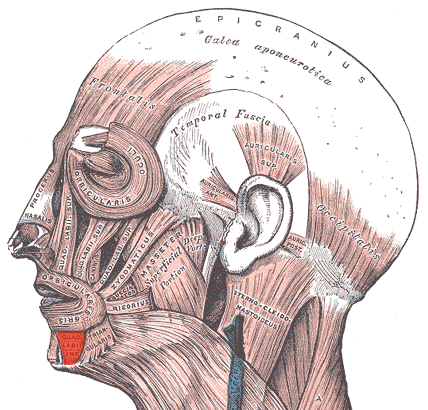We just learned about the
Digital Veins that bring deoxygenated blood back from the fingers toward the heart.
So we've now learned about all the veins of the legs and the arms.
There is a big vein in the neck called the
jugular vein, that brings deoxygenated blood back from the head toward the heart.
There are two jugular veins, the external and internal. The internal one is more inside the middle of the neck, and the external one is more toward the outside of the neck.
You can feel your pulse in the jugular vein in your neck.
After the jugular there are about 50 other small veins that connect to the brain, eyes, ears, mouth and every part of your body.

(from: wikipedia -
external jugular vein)
Kid Facts - Blast from the past: Left Atrium




























